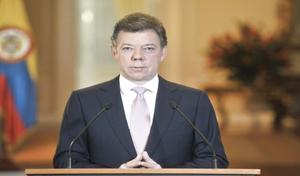The secret peace talks between the Santos government and the FARC are now out in the open. The first meeting took place in La Habana, Cuba, on February 23, and a follow-up meeting is scheduled to take place in Oslo, Norway, in October. It is premature to anticipate the prospects of these talks, however they are the first since the collapse of the last peace talks in 2002. Of course, everyone wants to know if it is going to work this time. I believe that the chance for success is higher now than in the 1998–2002 round. Below I briefly explain why. Success is by no means guaranteed, but there may be some hope.

The 1998 negotiations were improvised. There was no concerted dialogue with the dominant classes and, above all, with the United States. The talks were mainly motivated by the Conservative Party presidential candidate Ándres Pastrana’s political ambition to secure his election in the second round after a very close race in the first round against his Liberal opponent Horacio Serpa. Consequently, Pastrana was elected thanks to the support of leftists groups, including the Revolutionary Armed Forces of Colombia (FARC), and a middle class tired of war. When the peace talks began, the groundwork had not been laid. As a result, the whole affair was an exercise in improvisation. Government officials who participated in these talks in various capacities revealed to me how unprepared and un-coordinated their team was. But there were more fundamental flaws, which became evident during the first weeks of the talks. The Colombian military, right wing paramilitaries, cattle ranchers, and the United States each expressed reservations and open hostility toward the negotiation. The United States responded by introducing Plan Colombia in 2000 under which its military interventionism became ever more overt. At the time, the United States was convinced that the FARC could win the conflict if it did not interfere. This U.S. intervention, along with the other host of peace-talk opponents, ushered in 12 years of war and destruction that killed and injured close to 100,000 and displacing millions. Nearly $100 billion was invested in guns, rather than butter. In 1998, the leadership of the FARC also believed it had a military advantage over the state and that they could take power through the armed struggle.
What is so different now? Are the necessary components in line for a successful negotiated settlement to the second-longest civil war in the world after Burma?
The United States is one of the most critical actors, but its position isn’t clear yet—it’s the elephant in the room. The second most important player is the dominant class, which is divided into two major groups: The first are the conglomerates that have cemented their ties with international finance capital and regional markets, and therefore may not be very impacted by land distribution or a state distributive policy. Consequently, their position might be more benevolent than it may have been in 1998 when their capital portfolio was less diversified. The second group is the landed elite faction, including large cattle ranchers, narco-bourgeois elements, speculators, and also multinational corporations in the extractive sectors. They are all important players in the dynamics of war and peace. Among them, the landed elite exercises the most immediate threat to the peace negotiations, especially if a negotiated settlement includes a meaningful land reform. This faction of the elite employs private armies and hired killers. Meanwhile, the multinational corporations will lobby the U.S. government to insure that its interests and contracts are secured. Finally, the military and the political right, represented by the former president Álvaro Uribe Vélez (2002–10), are important players that could help to derail the peace process.
President Juan Manuel Santos and his peace overture based on his realization of the diminishing-returns of the war is facing formidable challengers, and he must mobilize important sectors of civil society, enlisting the support of the conglomerates, the urban middle class, and the democratic forces. I would suspect that this peace initiative has been cleared in Washington. If not, Santos may have already started it off on the wrong foot, knowing the array of enemies he has to contend with.
Finally, the agreed agenda that the FARC and state representatives will start negotiating on October 3 includes six main points: (1) A policy of comprehensive agrarian development that include access to land ownership, formalizing titles, stimulating agricultural production, and protecting natural reserves; (2) Guarantees of political participation, including security guarantees for the FARC, while the state commits to continue fighting illegal groups and their networks and those targeting human rights activists; (3) Termination of the conflict including a bilateral cease fire, disarmament, and the reincorporation of the FARC into civilian life; (4) A solution to the narcotrafficking problem with the participation of the involved communities in designing policies of illicit crops substitution; (5) The human rights of victims, truth, implementation, and verification; and (6) Mechanisms of implementation, verification, and follow-up, and settling differences of the agreed settlement.
Cuba and Norway will be the guarantors of the accord and Venezuela and Chile will accompany the process.
To be continued, stay tuned.
Nazih Richani is the Director of Latin American studies at Kean University. He blogs at nacla.org/blog/cuadernos-colombianos.

